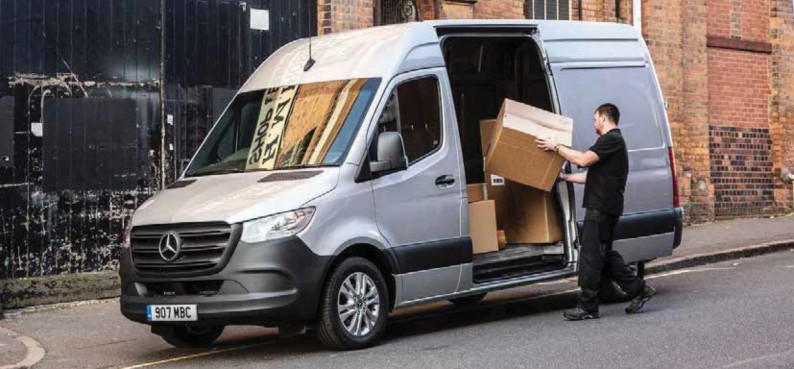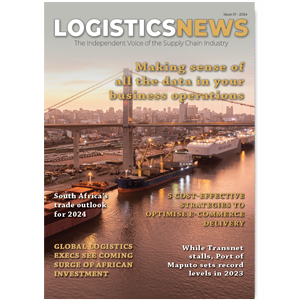The parcel market continues to grow at a fast clip. A panel of parcel experts at Logistics Management magazine discusses how to navigate the fastest moving segment of logistics.
MORE CONSUMERS than ever are leaning toward e-commerce and are shopping online for goods, and they want them delivered as quickly as possible. This has introduced the need for increased services, not only from the parcel duopoly of FedEx and UPS, but also from national and regional last-mile logistics providers looking to establish themselves, as well as 3PLs that are increasingly upping their parcel offerings on a regular basis.
Here to answer some questions are Jerry Hempstead, President of Hempstead Consulting, a parcel advisory firm; David Ross, Transportation and Logistics Director at investment firm Stifel; and Rob Martinez, President and CEO at Shipware, an audit and parcel consulting services company.
How would you describe the current state of today’s parcel marketplace?
Jerry Hempstead: The parcel shipping industry, both domestic and international, had a robust 2018. Shippers will not be looking to change carriers due to service issues in the coming year. In the meantime, more enhancements to service are in the pipeline, while profits are up for all the carriers.
Rob Martinez: In a word: dynamic. The big story is the growth of e-commerce and the ongoing Amazon effect. The ‘want it now’ delivery expectations of online consumers have required both carriers and retailers alike to modify shipping processes to accommodate same day and other expedited shipping methods. At the same time, shipping costs continue to escalate, as the parcel carriers remain focused on revenue enhancement and client retention strategies.
David Ross: It is certainly fast-paced, with increased demands on service from e-commerce along with increased demands on pricing from the large carriers to provide this higher level of service. Many small entrants have tried to carve out a niche, but most have struggled because it is hard to do without density.
Describe the current rate and pricing environment for parcel shippers.
Martinez: The bottom line is that parcel costs have never been higher. Shippers are wise to study the details of recent rate changes, as they may have more of an impact on your budget than one might perceive at first glance. Apart from the 4.9 percent average increases to 2019 published rates, many surcharges increased in excess of the 4.9 percent average, especially those surcharges related to larger packages. Moreover, fuel surcharge tables were changed several times over the past ten months resulting in higher costs for shippers.
Hempstead: Because there is limited choice for shippers in the parcel space, all the carriers have been emboldened in their changes in prices, fees, rules and regulations. It appears to those observing the industry that as one carrier adds, modifies or increases a price or fee, so does the other. This is all completely legal, as long as the carriers are not colluding in these changes. Then the regional carriers will follow similar increases shortly thereafter. The net sum for shippers is that they are being faced with having to budget for all or some of these increases, unless the shipper has negotiated an extraordinary carrier contract that calls for price reductions as the shipper’s volume increases. The notable exception to this is Amazon, whichw has continued to develop its own delivery network so that it can mitigate some of the impact of the outside carrier’s price increases. Obviously not all shippers are in a position to deliver their own packages.
How are the more established carriers adjusting to the ongoing influx of new, last-mile competitors?
Martinez: We are still in the early stages of this development, so it remains to be seen if these new entrants will make the big carriers stand up and take notice. Rather, the established carriers continue to focus on improving efficiency, protecting margins and reinforcing retention strategies like revenue-based discount programs to prevent shippers from diverting traffic to alternative carriers.
Ross: At this stage, the upstart last-mile parcel carriers are not having much of an impact; however, last-mile big and bulky delivery is a new niche that is outside of the traditional FedEx and UPS wheelhouse.
Hempstead: My observation is that the traditional service providers have already added to their menu of services some low-cost, B2C hybrid offerings that utilise the USPS or others not only to compete with, but at times partner with the new last-mile operators. To date, there has been no concerted effort by the ‘big guys’ to thwart off directly competing with the last-mile providers. However, should the economy slow down, all bets may be off the table because network capacity has to be fed
What advice do you have for parcel shippers in 2019?
Ross: Know your freight. That means know what you’re shipping, when you’re shipping it, how you’re shipping it, and how much you’re shipping. This will allow for better planning for the shipper and the carrier, ultimately resulting in better pricing.
Hempstead: Shippers need to take a step back and cut through the marketing hype. First, ‘free shipping’ is not free. Just look at the record operating profits raked in by FedEx and UPS over the past four quarters. Second, not every package needs to be there in two days. Third, the devil is in the details. In most cases the carriers know more about your business than you do. Shippers need a method and means to audit their shipment data and archive it. Finally, contract negotiations have become rocket science. There are so many moving parts with service levels, tiered discounts, accessorial fees and rules—and shippers have to remember that all of them are negotiable.
Martinez: With parcel pricing at an tall-time high, more than ever shippers need to dive into shipping analytics to identify opportunities for cost reduction, whether by changing packaging, modally optimising and employing least-cost routing at the package level, or negotiating improved contract discounts and terms. At current trends, free shipping may not be sustainable. Our research finds that nine out of 10 high-volume parcel shippers are overpaying by as much as 30 percent.




